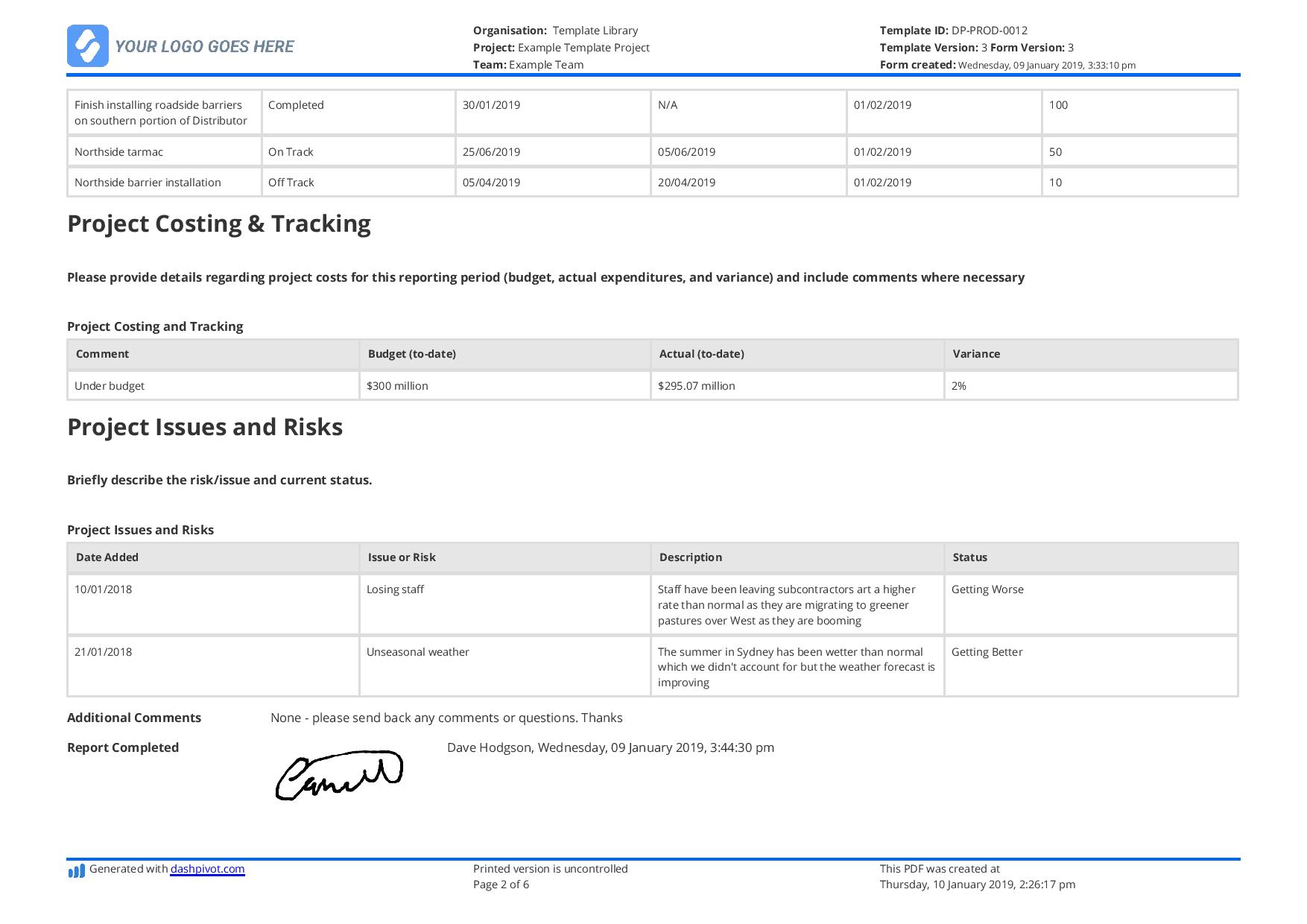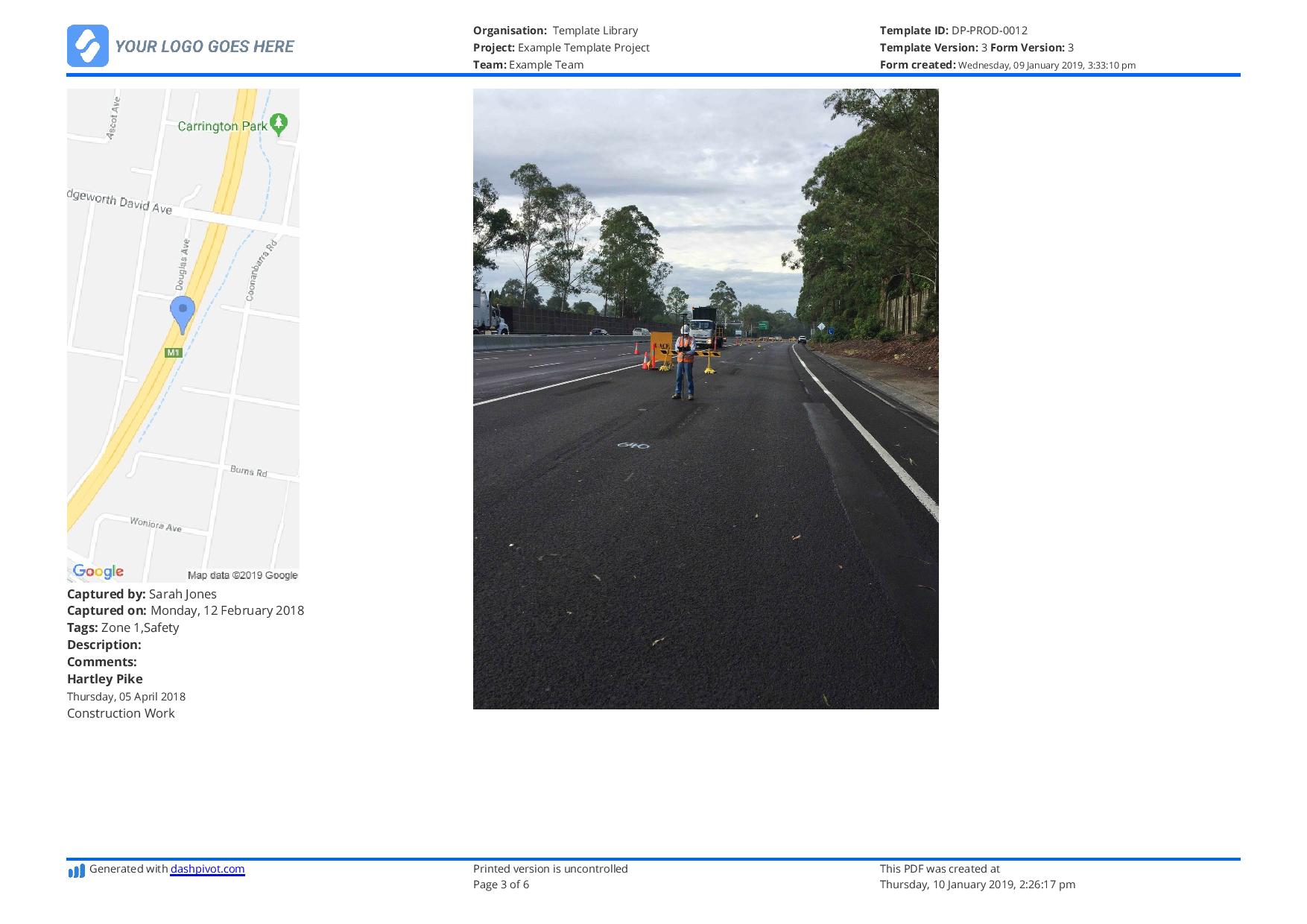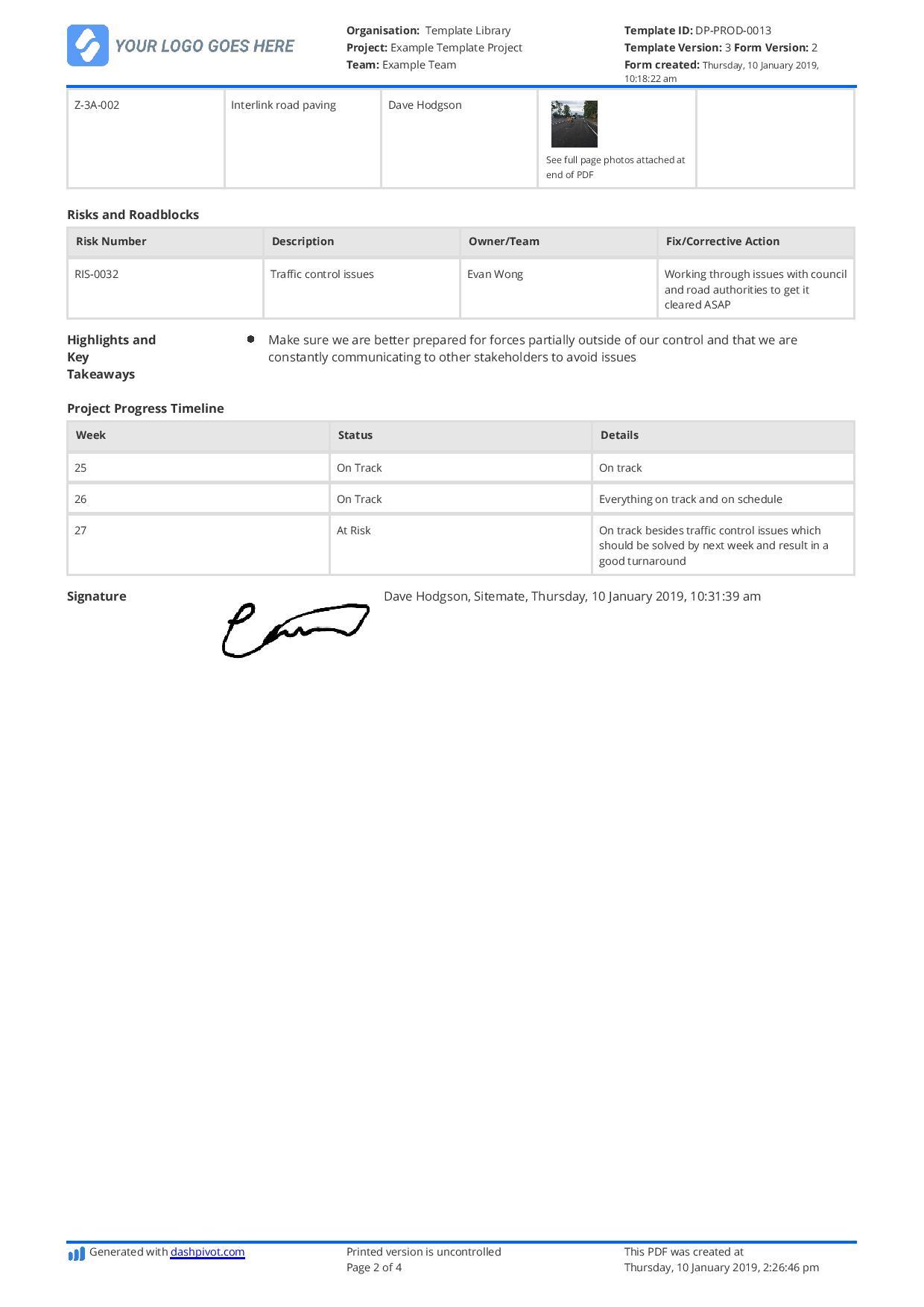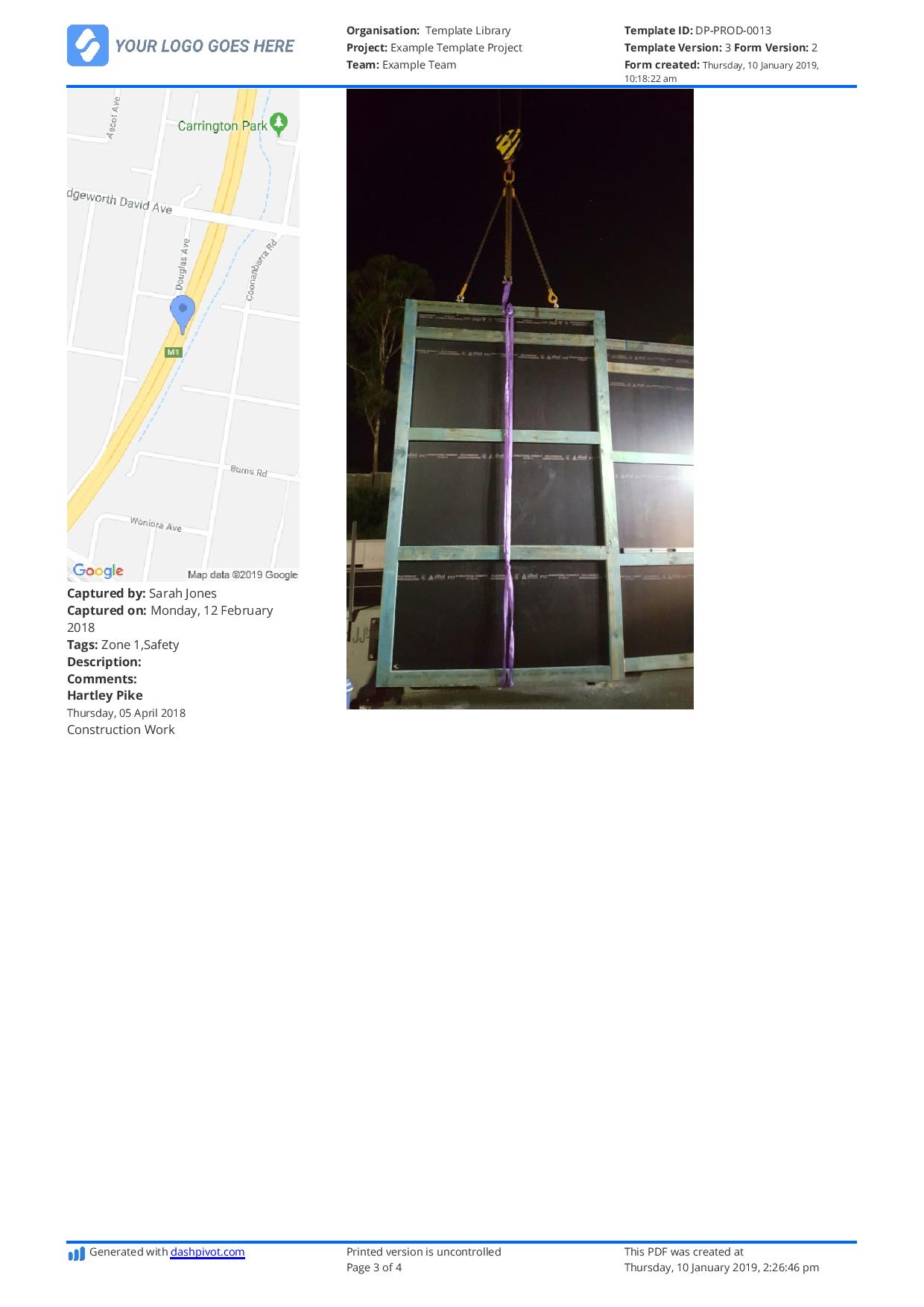Production – Example of a project status report

An example of a project status report
What is a project status report?
A project status report is a report which a project manager or other responsible party completes and shares with a contractor or client to update them on project progress with some level of detail.
The purpose of a project status report is simple:
Projects involve a number of stakeholders, and not all of these stakeholders have access to all of the information at all times. Project status reports serve as a powerful communication mechanism for keeping important stakeholders up-to-date at regular intervals.
For our purposes today, we are going to focus on construction project management, oil and gas, mining and other industrial project management scenarios.
These industries and verticals always operate on a project basis, and their projects are incredibly complicated:
- Often spanning a number of years
- Including tens or hundreds of different companies, subcontractors and suppliers
- Including multiple stakeholders with different goals and objectives including clients and owners, contractors, subcontractors and communities
- Multi-dimensional in that they span across safety, environmental, quality, commercial and financial functions
Why are project status reports important?
Project status reports are a critical part of effective project management for projects involving more than one person, team or company.
Without project status reports, companies involved in small, medium and certainly mega-projects risk missing important steps or processes and not having access to the information they need to make good decisions moving forward.
They also risk continuing to execute on the initial 'plan' even though multiple parts of the plan have changed, often resulting in chaos and the blame game.
In fact, it is often a lack of information on many industrial projects that is the direct root cause or project delays and budget blowouts. Contractors don't understand what's going on with subcontractors or clients aren't in the loop as to what's the latest on site. This is far too common a scenario on sites all over the world.
Communication and collaboration are absolutely vital to effective project management, and more importantly, to delivering projects on time and budget.
Project status report example
There isn't one project status report example which works for everyone, because every project is slightly different, and the information which every client and contractor wants can be slightly different too.
The most important part of your project status report format is that it remains consistent. It's vital the format remains consistent across a project or phase of works (unless your boss or person your reporting too asks for changes or additional information), and it's ideal if you can keep your reporting format as consistent as possible across projects. The easiest way to do this is to create a project status report template which you can deploy across your teams and projects.
This way your project status reports stay clean, standardised and organised, and you can compare project-to-project on a pretty direct basis.
Keeping all of this in mind, this example of a project status report can serve as a useful and proven framework for your project status reports.
There are a few important sections or 'components' within these example which come together to form a comprehensive project status update.
The first thing you will note in the example is that there is always important and unique record keeping captured on status report. A status report should not be scribbled down on a piece of paper or a few photos shoved together, it should be a formal and structured document with record keeping information which tells any who looks at it:
- What was the reporting period the report is covering
- What project are we talking about (project name, number, description)
- Who is the person completing the report (and their information)
Once this detail is documented on every project status report, the reported can get stuck into the meat of the document.
It's helpful to summarise the status update at the start of the report which is usually done through a system of:
- On track
- Off track
- At risk
- Complete
And provide some visual cues or photos which prove what has been done.
Next, the project status report should cover some milestones or deliverables, before jumping into project costing and tracking (important budget information) as well as project issues and risks, and how they are being dealt with or actioned.
You can see in this example how valuable a good project status report is. It summarises all of the important project information which someone needs to get a good read on how things are going, and how the actual progress is tracking in comparison to what was planned and expected.
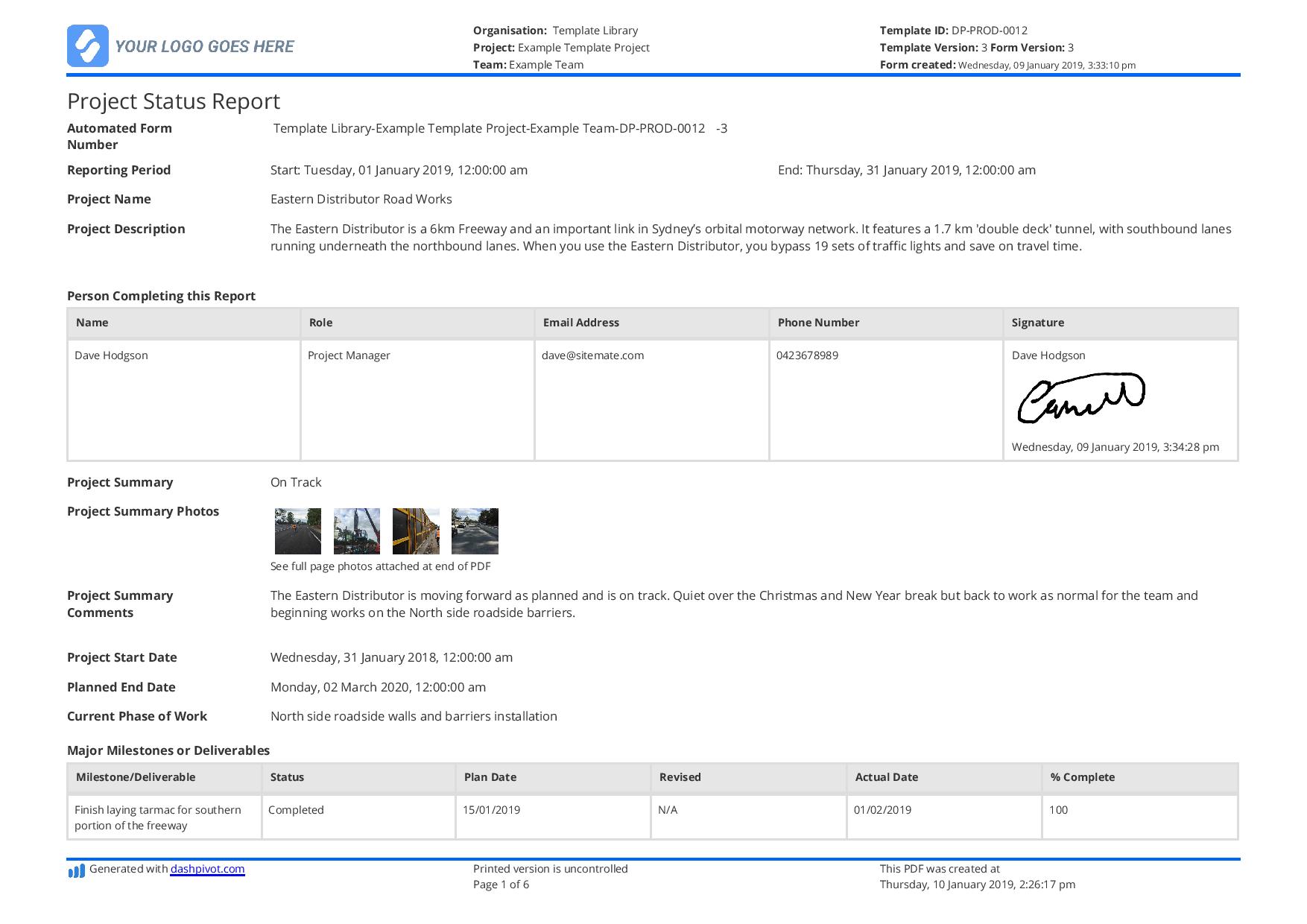
Use and customise this project status report example for free.
Another example of a project status report
The timeframe in which project status updates are planned and sent differs across different clients, contractors and projects.
On many long term projects, a monthly status update between different parties or stakeholders may suffice (supplemented by daily reporting at a lower level).
But on some projects, and for some parties who are conducting a specific phase of works, a weekly project status report may be required.
The example project status report below is created and formatted for weekly updates.
You'll see that it also is a fairly different example overall, and provides the reporter with a similar framework but slightly different fields for reporting.
The different between these two examples is illustrative of project status reporting. It's up to you and the people receiving the reports to come to an agreement as to what's the most important information we can gather and share.
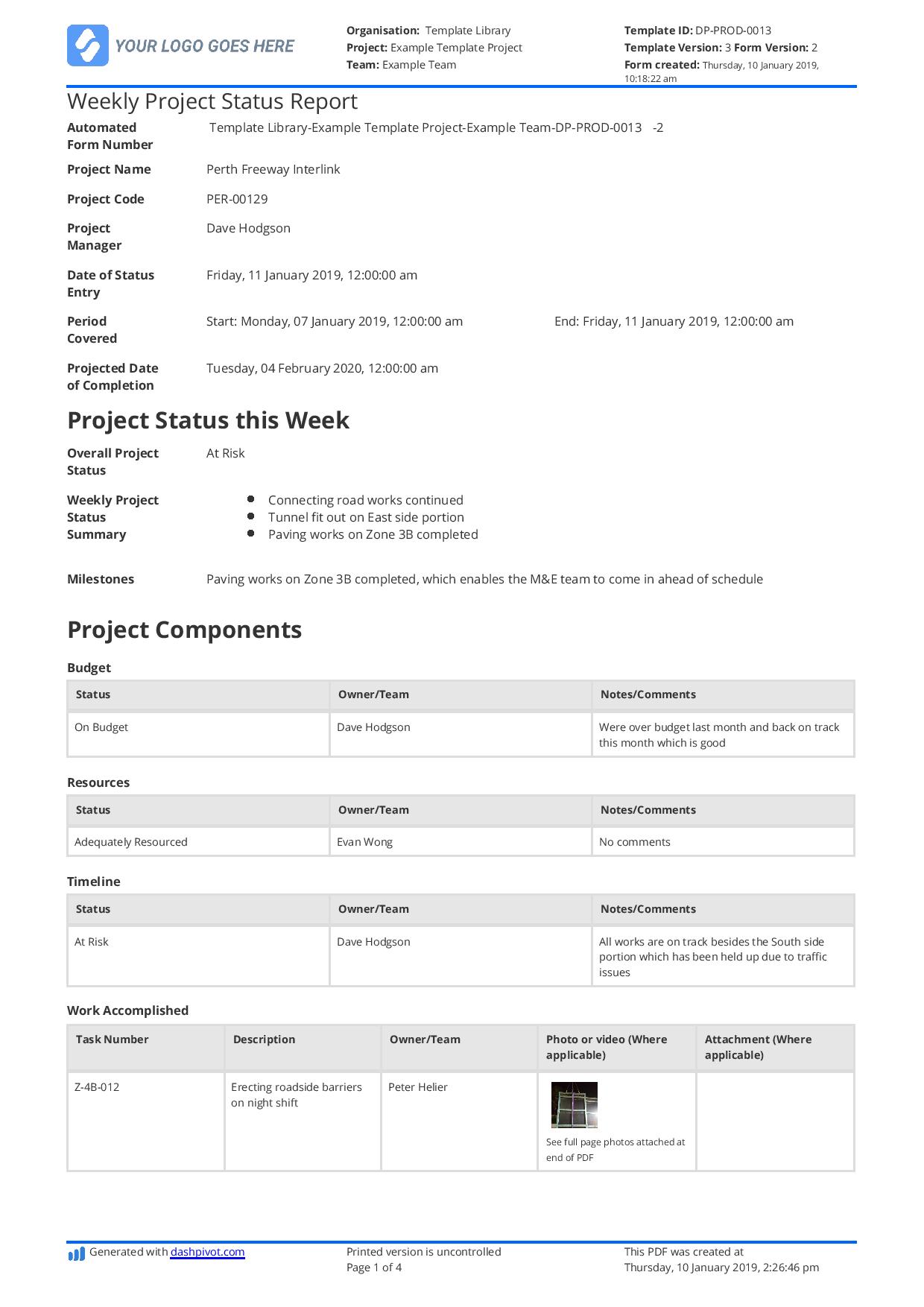
Use, download, print or share this project status report.
How to streamline how you document, manage and share project status updates
At the surface level, it may seem like the project manager or person responsible for project status updates is at fault for not providing project status reports or the necessary level of detail.
But these project managers often don't get enough information from site in order to assemble accurate reports.
The data and information that is documented in a project status report must pass through multiple people and levels of work - and it must be easy enough to understand and reconcile.
Many project status 'reporters' spend their days sorting through fragmented PDFs, word docs and excel documents, and manually entering this data and reconciling it into spreadsheets in order to understand how they are progressing and in order to provide accurate information to the report recipient.
This can be frustrating and time-consuming, but also reduces the quality of the information being provided, and doesn't provide real-time data.
By the time everyone gets their daily reports and site diaries in and it gets pulled together and aggregated, the data can already be multiple days or weeks old.
In order to avoid this problem, many companies and projects are turning to software and technology.
These softwares enable workers to capture what's happening on site with a mobile or tablet - and send the information captured into the cloud where a project manager can see it in real-time, and where the data is standardised and clean so that it can be easily formatted, understood and used for reporting.
These softwares often include the power to generate reports automatically, as well as track planned vs. actuals in real-time so that you can accurately report on the percentage of works completed, how the project is running against the budget and other important project status metrics.
If you are looking for a way to streamline project production tracking, then look at this production software - or get started with one of the smart project status example forms below which you can customise and use for your own projects.
People in 80+ countries use this production management system to better capture, track and share project status updates and reports.

